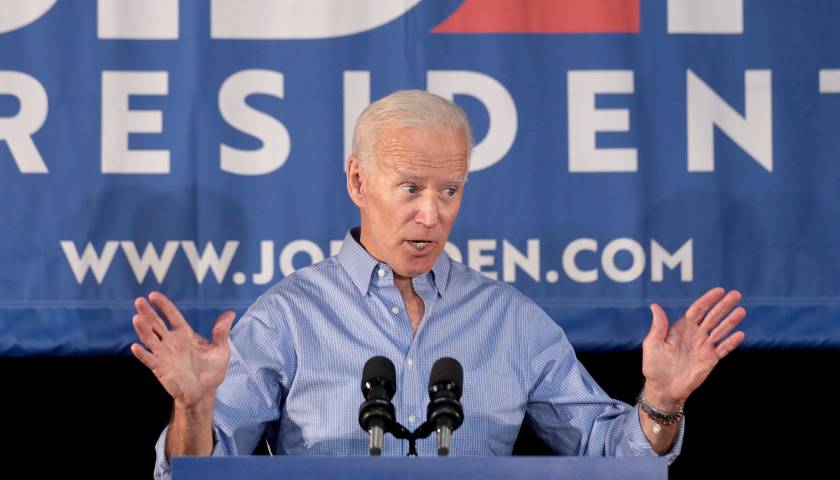by Robert Romano
Since 1960, Democrats have won the popular vote in 10 out of the last 16 presidential elections, and thanks to a combination of historical realignment (beginning during the 1930s), presidential coattails and the incumbency advantage, have also won U.S. House majorities in 11 out of those 16 contests, oftentimes with super majorities.
The modern story over U.S. House control, and therefore legislatively shaping the society of laws we live in presently, begins in 1932 when Franklin Roosevelt and Democrats utterly crushed Herbert Hoover’s reelection bid, winning 57.4 percent of the popular vote and 42 states to Hoover’s meager 39.6 percent and 6 states.
As a result, Democrats won historic victories in the House in 1932, picking up 97 seats the same year to reach 313 seats to Republicans’ 117 seats.
In 1936, Roosevelt easily won reelection, this time with 60.8 percent of the popular vote and 46 states to Alf Landon’s 36.5 percent and 2 states. In the process, Democrats picked up another 12 seats after picking up several more in the 1934 midterms, to reach a high-water mark of 334 seats in the House to Republicans’ 88 seats, who were being wiped out to the point of near extinction.
The 1936 result would set the tempo for the rest of the century, with Republicans slowly but surely nipping away at the incumbency advantage in successive elections, briefly and barely taking control of the House in the 1946 midterms and again in 1952 with Dwight Eisenhower’s landslide victory, quickly lost in Harry Truman’s 1948 win and in the 1954 midterms, respectively.
Thereafter, Democrats would keep control of the chamber all the way until the 1994 midterms of Bill Clinton as another shift occurred, wherein Republicans would be able to hold the chamber for 12 consecutive years, as the incumbency advantage came to their aid in holding the chamber in 1996 despite Clinton’s reelection. Wins by George W. Bush in 2000 and 2004 helped to shore up and expand majorities.
The factors headed into a presidential year that appear to matter the most are how many seats a party has headed into the election and performance at the top of the ticket, as certainly seen in the cases of 1932 and 1936, where if a presidential candidate overwhelmingly wins the popular vote, it can bode well for the party down the ballot.
The same phenomenon enabled Eisenhower and the GOP to briefly grab control in 1952 after picking up 22 seats, Richard Nixon to pick up 12 seats in 1972, Ronald Reagan to pick up 34 seats and 16 seats in 1980 and 1984 respectively and George W. Bush to pick up 3 seats in 2004.
Republicans might have done even better, but apparent ticket splitting by voters made their path to super majorities impossible in the 20th Century, where despite big wins by Eisenhower in 1952 and 1956, Nixon in 1972 and Reagan in 1980 and 1984, many voters still opted to vote for their Democratic Congressmen and women, although Reagan and the GOP notably won the U.S. Senate in 1980 after picking up 12 seats.
Legislatively, the results speak for themselves. With supermajorities in the 1930s, Democrats were able to usher in the New Deal, Social Security, the National Labor Relations Board, unemployment insurance and farm subsidies. Again in the 1960s, with big majorities in Congress, Democrats were able to secure passage of the 1964 Civil Rights Act, and particularly after Lyndon Johnson’s landslide win in 1964, to establish Medicare and Medicaid.
Republican wins in 1980, 2000 and 2016, on the other hand, led to passage of increases in defense spending and tax cuts but not much else was achieved on a partisan basis. George W. Bush’s reelection in 2004 and Donald Trump’s win in 2016 stand out as legislative majorities that were essentially squandered, particularly in the latter case, where despite control of both chambers, the GOP Congress could not even deliver on Trump’s signature campaign promise of building a southern border wall (Trump would have to resort to declaring a national emergency and reprogramming bits of security spending to getting something done).
In a similar vein, Joe Biden’s bare victory in 2020 was Pyrrhic, only winning 222 seats in the House and a 50 to 50 tie in the Senate — the weakest majorities for a Democratic president since Grover Cleveland — and legislatively he got almost nothing accomplished. Yes, there was the $1 trillion helicopter money stimulus in 2021 and the so-called Inflation Reduction Act which was just billions of subsidies for green energy but spending is only temporary. Democrats were unable to pack the Supreme Court, pass the Green New Deal, pass the H.R. 1 federal election takeover or make D.C. or Puerto Rico states despite Republican worries about those items.
The lesson is majorities matter, and particularly, how large the majorities are. For example, right now, Republicans are barely holding onto a 217 to 213 majority in the House. Members have already deposed one Speaker, Kevin McCarthy (R-Calif.), in 2023 and now are poised to attempt to do it again to Mike Johnson (R-La.), as if much more could be expected to be accomplished with such a slim majority and no Senate or White House control. It’s a fantasy.
As in 2011, in 2023, Republicans were able to leverage the debt ceiling to achieve budget sequestration, which will constrain so-called discretionary spending. In both cases, that was about all that could be accomplished with just one chamber and, frankly, not that big of a majority.
If Republicans want better outcomes legislatively, it’s simple math. Presumptive Republican nominee Donald Trump needs to campaign heavily in Democratic areas and win the popular vote — and win it by so much it has the effect of realigning Congress. With Biden trailing national, popular vote polls for almost a year now, just such an historic opportunity is presenting itself.
All cry-baby hand-wringing aside, in terms of meaningful legislation that stands the test of time, nothing else matters.
– – –
Robert Romano is the Vice President of Public Policy at Americans for Limited Government Foundation.
Photo “Donald Trump” by Daniel Scavino Jr. .




